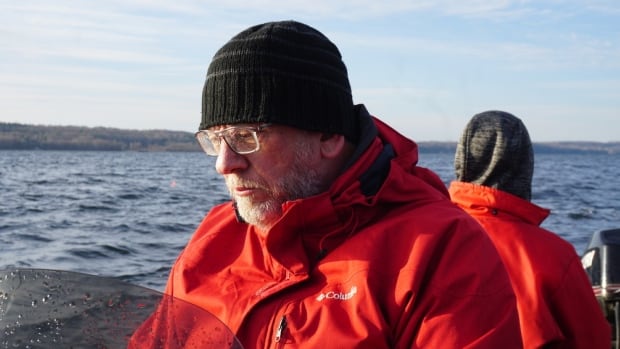Ice fishing has been a part of Canadian winter culture for generations, but what happens if there’s no ice?
That concern is being shared by some anglers in southern Ontario.
Typically, mid-January marks the beginning of the safe ice season. But with unseasonably warm temperatures, ice anglers are starting to worry if, locally, there will be any ice at all.
Marty Draeger is the founder of Grumpy Baits, a fishing lure manufacturer based in Waterloo. His lures are sold in bait shops year round across the province.
“Normally, we’d be doing a restock by now,” Draeger said. “We’re all sitting on the fence waiting for that first safe ice to appear.”
He said his winter business usually starts before the holidays and goes until March. But this year, he’s still hoping for the season to begin.
“I would say that we’re looking at anywhere from 30 to 40 per cent of my business is reliant on the winter season for ice fishing.”
Draeger his business isn’t the only one suffering from a lack of ice. The areas that are heavily fished during the winter season aren’t seeing the traffic the local economy has become used to this time of year.
“You have local businesses — Tim Hortons, the food stores, the gas station — it’s a big part of their revenue income source.”
Draeger has been ice fishing since he was eight years old, when his father first took him to Lake Simcoe.
“In the past, I’ve been on the ice as early as mid-December. That goes back a long way.”
‘Winter is being pushed back’
Robert McLeman, a professor of environmental studies at Wilfrid Laurier University, said ice anglers can blame an El Niño winter for the atypical warmth.
“This is a natural global climate phenomena that happens once or twice each decade,” McLeman said. “It tends to bring unusually mild temperatures to eastern North America.”
He said this weather phenomenon will likely cause fluctuating temperatures all season, making it difficult for ice to form on lakes, ponds and rivers in Waterloo region.
“Essentially, our start date for winter is being pushed back.”
But the El Niño winter isn’t the only reason ice isn’t forming locally.
“Winter is just generally, in eastern North America, becoming shorter and milder because of climate change,” McLeman said.
“Think about ice fishing as a sort of frontier — 30, 40, 50 years ago, we could count on winters being cold enough here in southern Ontario for there to be a good ice fishing season. That frontier is now moving northwards.”
Ice safety is key to enjoying the winter fishing season. McLeman said that depending on the ice surface activity, the ideal thickness of the ice can change.
Wait for the professionals
Glenn Cooke runs an unofficial fishing club, Fishing with Nerds, at the University of Waterloo. He had plans to take his fellow students ice fishing this season, but doesn’t know if that will be possible.
“The main difficulty is just the duration of safe ice that we have,” Cooke said.

“I’d like to be fishing in January, but generally the ice isn’t there yet. By the time March rolls around, the ice is getting a bit shaky and we really just don’t want to be out on it.”
Fishing with Nerds is made up of students who usually aren’t very experienced. Cooke offers to take them out and teach them survival skills like camping, foraging, hunting and, of course, fishing.
An important part of Cooke’s job is guarding students’ safety. In past years, he has had students wear ice picks around their necks in case one falls through the ice.
“I’m typically the oldest person there. I generally lead the way often with what they call a spud bar, which is just a metal bar, like a pry bar.”
Cooke said his safe-ice litmus test is waiting until he sees professionals out on the ice. Once huts start popping up, he knows the ice is thick enough.
However, Cooke’s not sure when that will happen this year.
“I don’t want to stop fishing. Of course not.”


